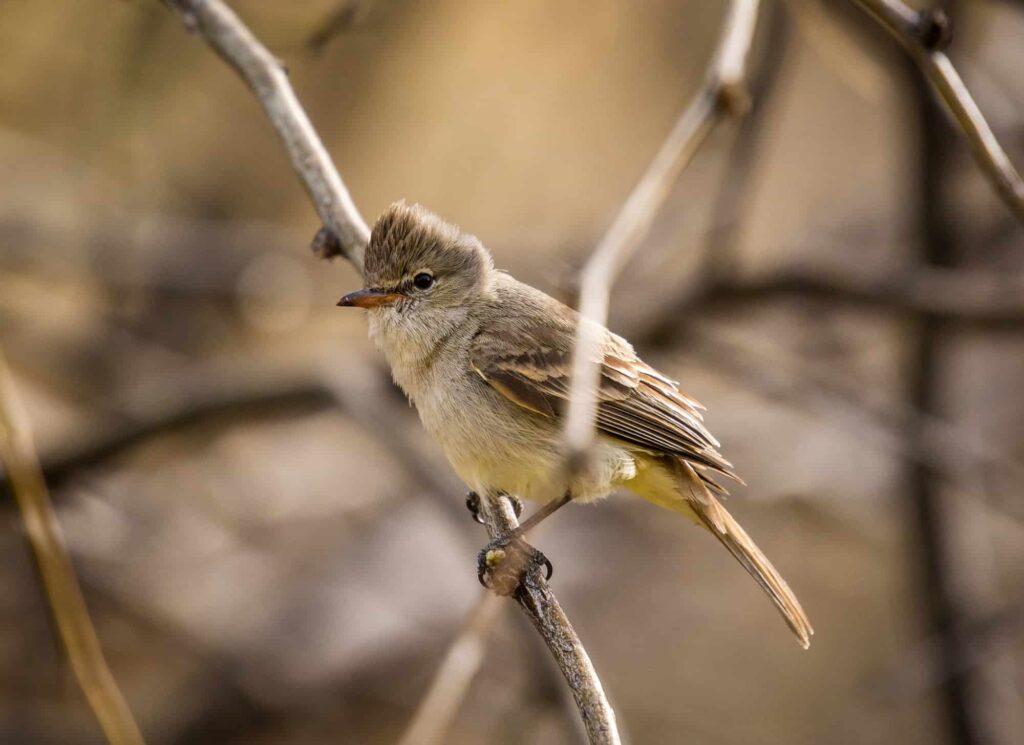If you’ve ever been amused by the long and complicated names sometimes given to birds, a funny question may have crossed your mind: ‘What’s the longest bird name in the world?’
Using some top-secret technology, I’ve exhausted comprehensive lists of bird species from around the world, and have compiled a list of the tongue-twisting champions!
If you’re ready to get silly, let’s take a look at the longest common bird names in the world, followed by the longest scientific name, and the longest names of birds in North America.
In the end, I’m going to reveal four kinds of birds with the shortest names, too. Some of them you’re already bound to know. Can you guess? Clue: they all have three letters to their name.
The Longest Common Bird Name In History
Himalayan Goldenbacked Three-toed Woodpecker (Dinopium shorii)
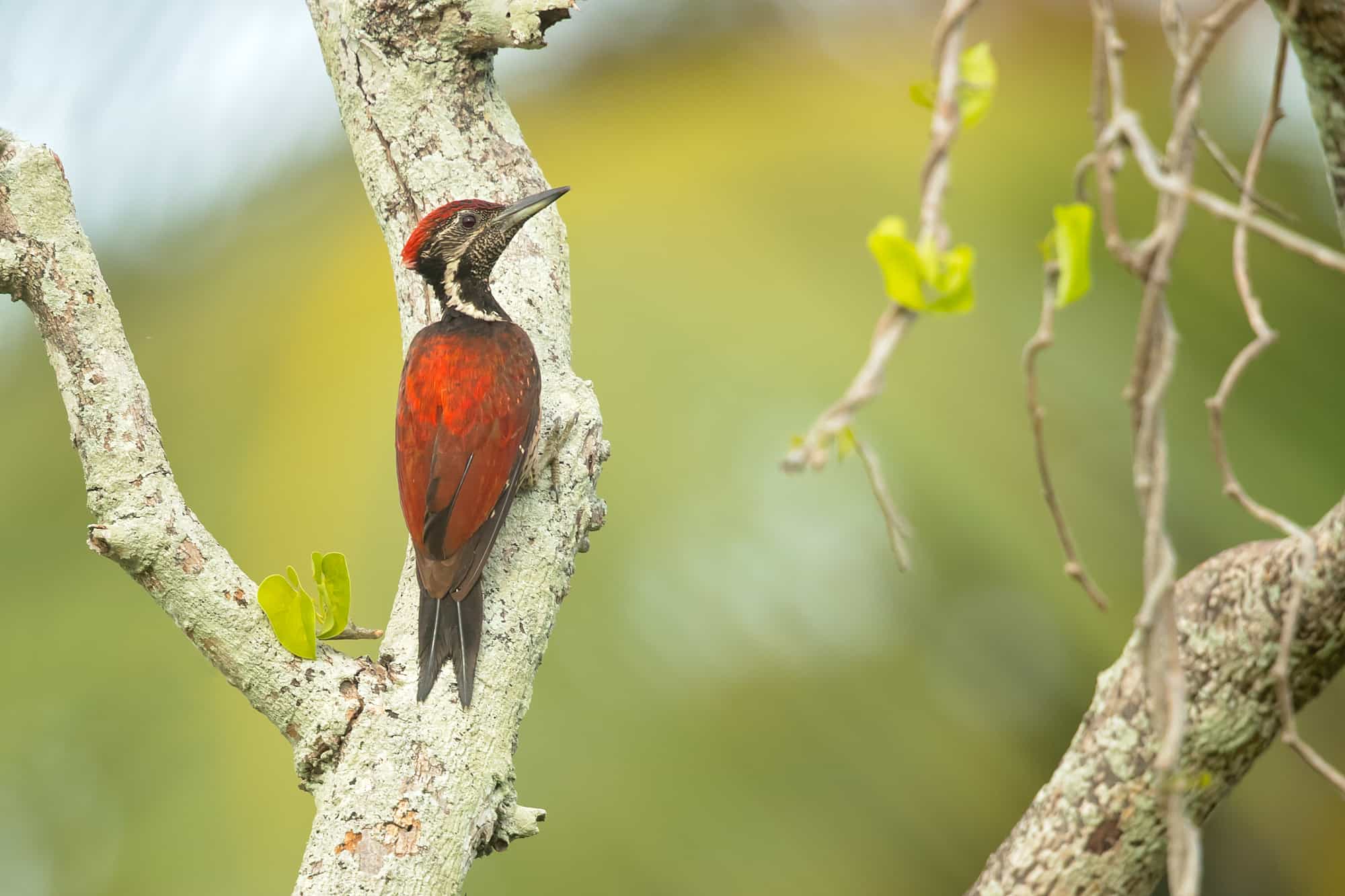
Decades ago, when new birds were still being rapidly discovered and categorized, some were given impressively convoluted common names!
In Ali and Ripley’s Old Pictorial Guide to the Birds of the Indian Subcontinent (1983), Dinopium shorii, now known simply as the ‘Himalayan Flameback’ was listed as the ‘Himalayan Goldenbacked Three-toed Woodpecker.’
At 43 characters, that’s difficult to beat, and I haven’t come across any other common bird names in history that even come close!
It’s not surprising then that this name didn’t catch on, and these days it’s hardly referenced.
An incredibly striking bird, the Himalayan flameback has a dazzling scarlet red crest and a beautiful black and white striped face, with a golden-green back and occasional tints of red.
Its range spans across low-middle altitude forests of Bangladesh, Bhutan, India, Myanmar, and Nepal, but very little is yet known about the feeding, breeding, or behavior of these mysterious birds!
Longest Current Common Bird Names in the World
A comprehensive list of the longest common bird names still in use:
The Two Winners: 35 Characters
Stuhlmann’s Double-collared Sunbird (Nectarinia stuhlmanni)
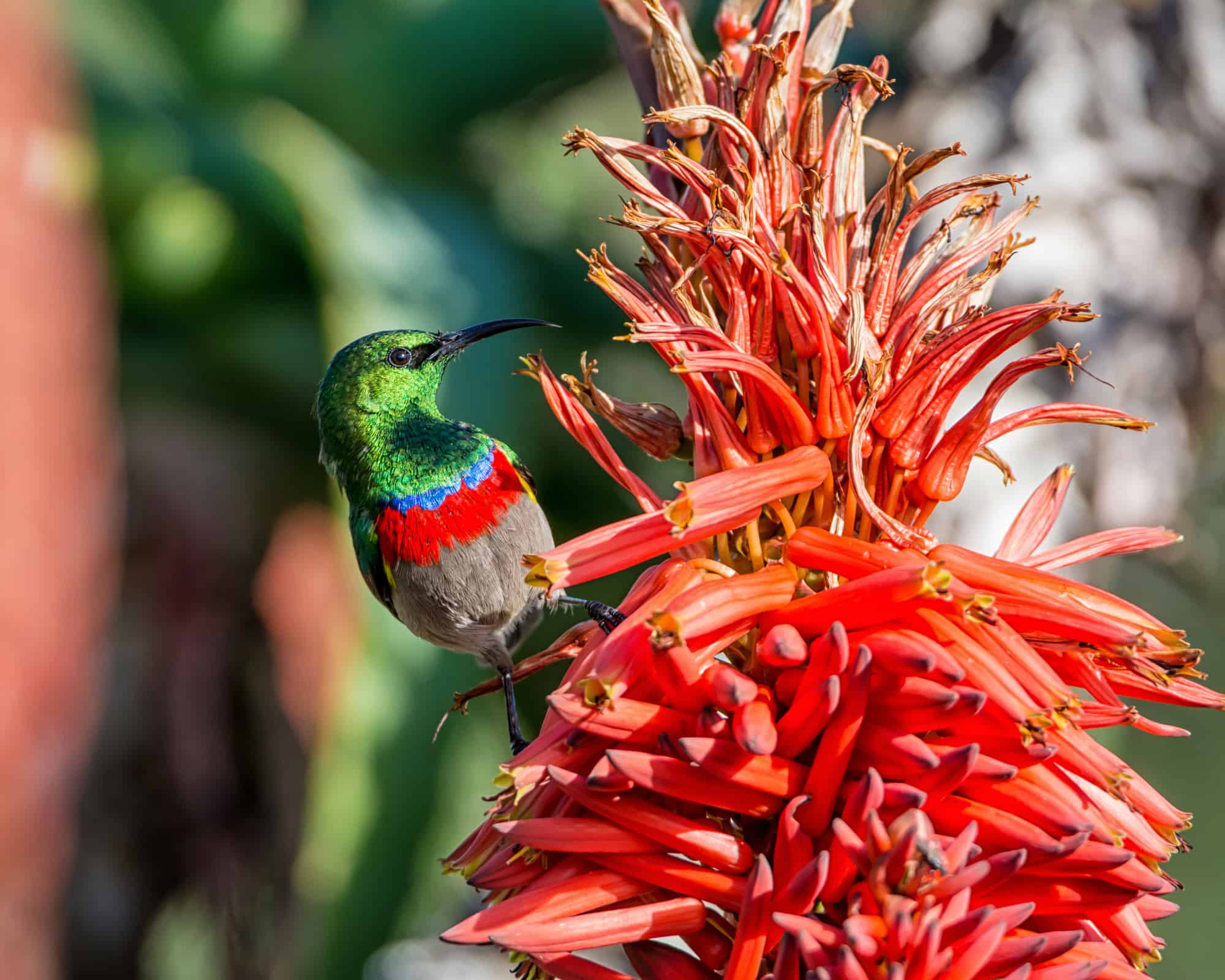
With a whopping 35 characters to its name, the Stuhlmann’s Double-collared Sunbird is, understandably, sometimes abbreviated to Stuhlmann’s sunbird.
As far as my technological capacities have shown me, this bird shares the world title for the longest common name in the world with only one other species.
This bird’s extravagant name is only exceeded by its beauty. Its gorgeous blue iridescent head is separated from its scarlet red belly by a shiny purple collar. Its long, downward-hooked bill is typical of the sunbird family.
Stuhlmann’s Double-collared Sunbird is found in the Ruwenzori range of mountains of Congo, Rwanda, Burundi, and Uganda. Its natural habitat is subtropical or tropical dry forests.
Sadly, deforestation has meant that this species is threatened by habitat loss.
Prigogine’s Double-collared Sunbird (Nectarinia prigoginei)
As the only other bird with 35 characters in its name, Prigogine’s Double-collared Sunbird is the joint holder of the world title for the longest bird name.
Interestingly, scientists were previously wondering whether this bird should be considered the same species as Stuhlmann’s Double-collared Sunbird, but now it is thought to be a distinct species.
Endemic to a similar range as the former bird, the Prigogine’s Double-collared Sunbird belongs to The Albertine Rift Montane Forests, a tropical moist broadleaf forest ecoregion in east-central Africa. The area is well-known for its rich biodiversity.
Sunbirds typically use their long, downward-pointed beak to feed on nectar from flowers in a similar way that hummingbirds do. They will also eat insects and spiders, and some species feed on fruit, too.
Like its cousin, this species is threatened by habitat loss.
The Runners Up: 34 Characters
Streaky-breasted Jungle-Flycatcher (Rhinomyias addita)
With 34 characters to its name, the Streaky-breasted Jungle-Flycatcher is runner-up in the race for the longest title, along with two other birds.
I suppose it’s just personal fancy, but this bird’s name is probably my favorite on the list. Streaky-breasted Jungle Flycatcher – hard to beat!
Also known as the Buru jungle flycatcher, this bird is native to the island of Buru in Indonesia where it once inhabited tropical forests at elevations between 500 and 1,500 meters.
Sadly, many of its natural forest habitats were felled for logging, and the species was listed as vulnerable in 1994 by the IUCN.
Thankfully, this bird seems to have adapted well to human development and now inhabits areas where the forest was previously cleared. Its classification has been changed to ‘near threatened’ as a result.
Greater Blue-eared Glossy Starling (Lamprotornis chalybaeus)
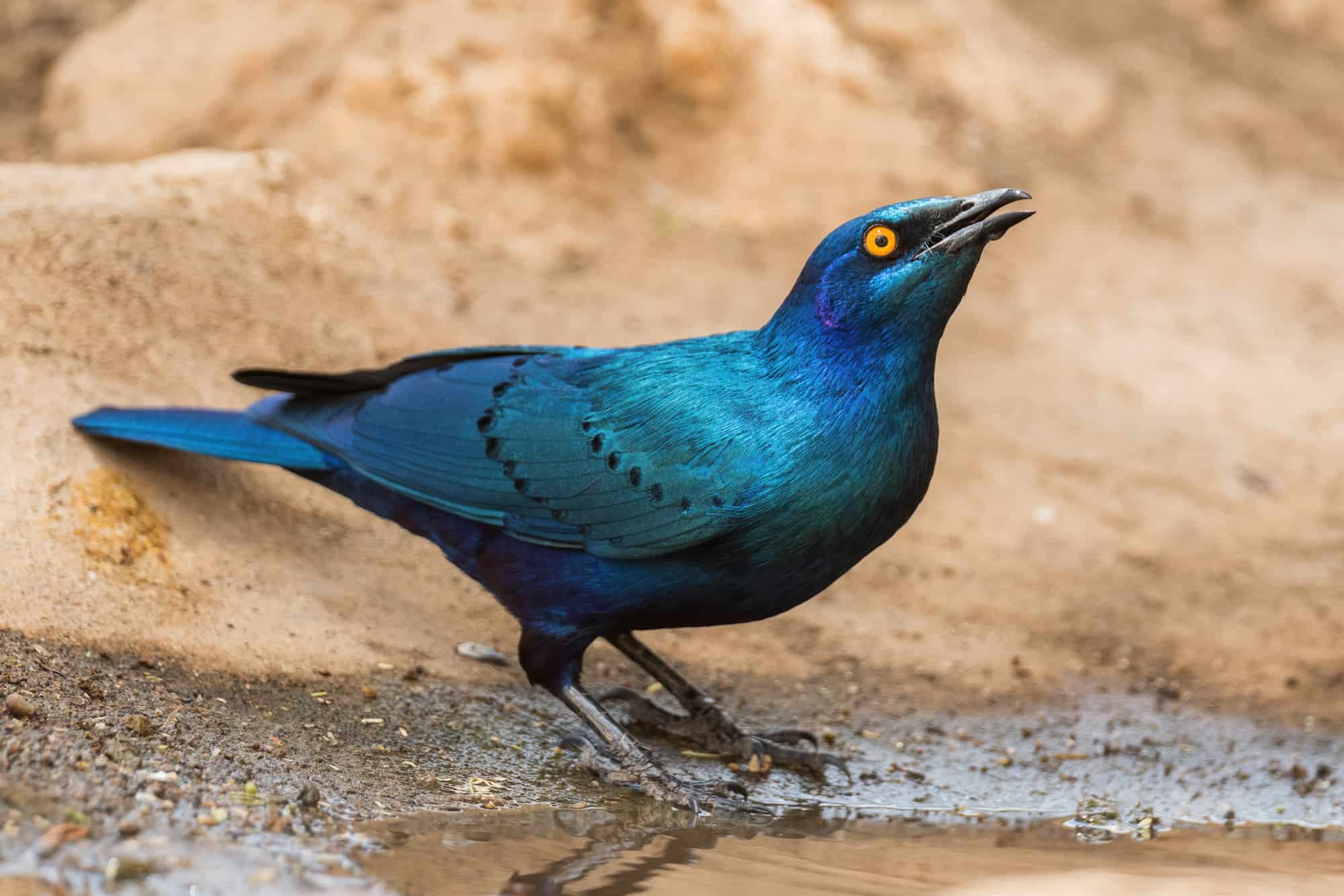
The second of our bird names with 34 characters is the greater blue-eared glossy starling. Now there’s a mouthful!
The long name is worth every letter for how well it describes this beautiful bird. Although the name is sometimes shortened to ‘greater blue-eared starling’, the sheer glossiness of this bird is really astounding and deserves a place in its name!
I’ve never traveled through sub-Saharan Africa, but if you’ve ever had that opportunity, you’ve probably come across these birds somewhere during your stay.
As a common and widespread species of open woodlands, this noisy, gregarious bird likes to form large flocks with other starlings.
If you’ve been lucky enough to go on safari, you might have spotted the greater blue-eared glossy starling riding on the backs of livestock and wild animals where they pick off various insects and parasites.
Abyssinian Yellow-rumped Seedeater (Crithagra xanthopygia)
Yet another African species, the Abyssinian Yellow-rumped Seedeater is a type of finch found in Eritrea, Kenya, and Ethiopia. Its native environment comprises subtropical and tropical dry shrubland and savanna.
A fairly modest-looking bird compared to many of the others in our list, the yellow rump is the only colorful part of its otherwise brown and light gray body.
Until recently, it was previously thought to be in the canary family, but modern genetic analysis has reclassified it to the Crithagra genus.
Although its name is sometimes shortened to ‘yellow-rumped seedeater’ or ‘black-throated canary’, I think it’d be a shame to lose its wonderfully long and descriptive name.
Birds With 32 Characters in Their Name
While there are only a handful of birds that have 35 or 34-letter names, there are many more that share the 33 and 32-letter spots. Still worthy of mention, some of these birds have very impressive names indeed. In alphabetical order, here they are:
- Black-and-white-casqued hornbill
- Black-capped paradise kingfisher
- Black-necklaced scimitar babbler
- Brown-headed paradise kingfisher
- Chestnut-backed scimitar babbler
- Chestnut-bellied imperial pigeon
- Chestnut-breasted mountain finch
- Chestnut-crowned foliage-gleaner
- Cinnamon-bellied imperial pigeon
- Donaldson Smith’s sparrow-weaver
- Greater necklaced laughing thrush
- Himalayan white-browed rosefinch
- Ludwig’s double-collared sunbird
- Northern chestnut-tailed antbird
- Northern double-collared sunbird
- Orange-billed nightingale-thrush
- Red-breasted paradise kingfisher
- Rwenzori double-collared sunbird
- Scarlet-bellied mountain tanager
- Southern chestnut-tailed antbird
- Southern double-collared sunbird
- Streak-breasted scimitar babbler
- Usambara double-collared sunbird
- Vogelkop superb bird-of-paradise
- White-bellied crested flycatcher
- White-throated jungle flycatcher
- Yellow-breasted warbling antbird
- Yellow-throated woodland warbler
Bird Species With the Longest Scientific Name
Latin names for birds can often be quite a mouthful, but there is one bird that takes the cake in this contest, and doesn’t need to share it with anyone else!
The Crowned Slaty Flycatcher (Griseotyrannus aurantioatrocristatus)
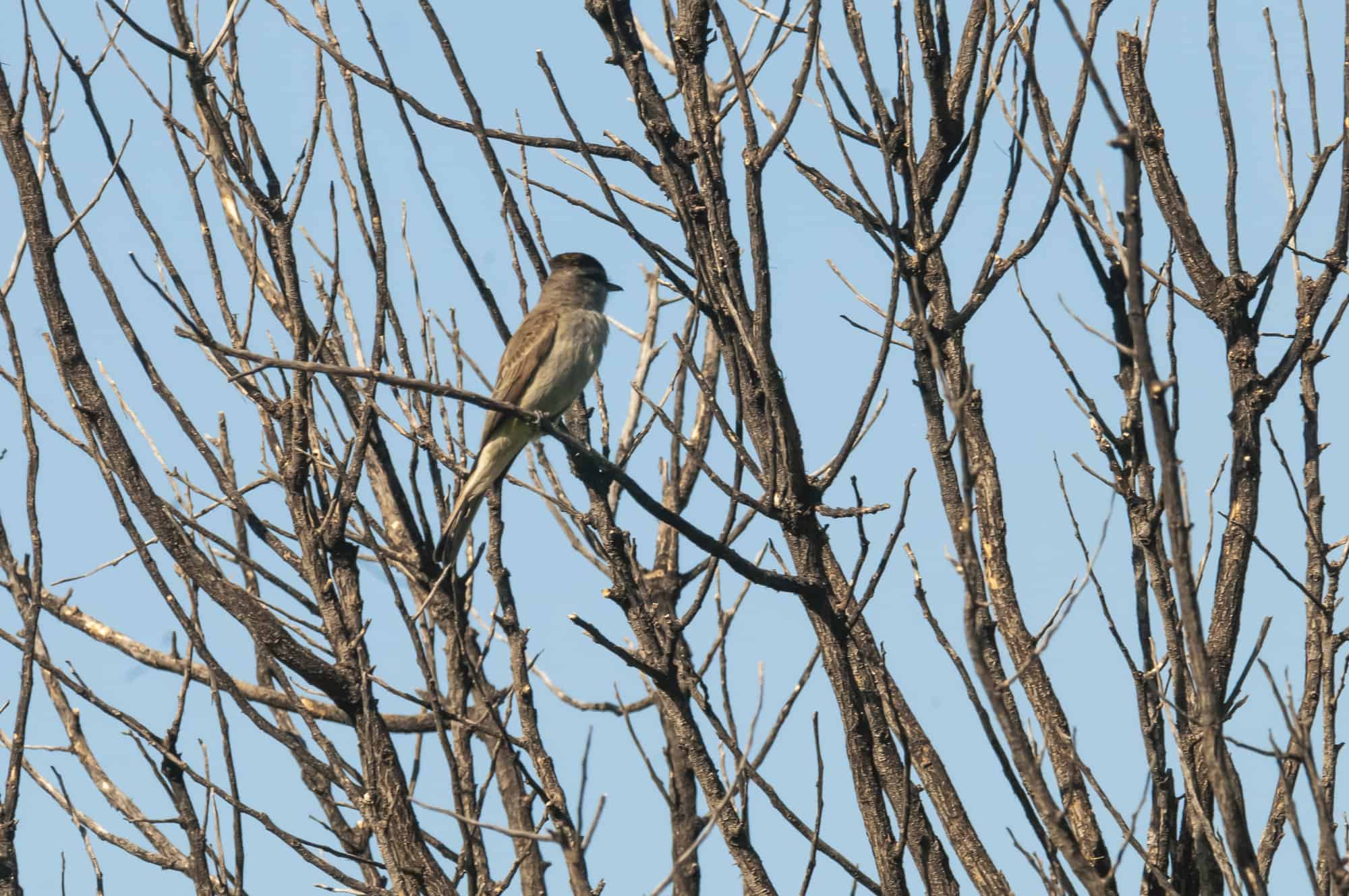
The bird with the longest Latin name has one more character to it than any of the common bird names. With 36 characters, Griseotyrannus aurantioatrocristatus, is a full 15-syllables when spoken aloud!
Its scientific name literally means ‘orange-black crested gray Tyrannus’ – but sadly it didn’t earn that for a common name!
The Crowned Slaty Flycatcher used to be considered part of the Empidonomus genus but has since been reclassified as the only member of the Griseotyrannus genus.
This member of the tyrant flycatcher family is found in the Southern Amazon where it inhabits subtropical to tropical dry and moist lowland forests.
Longest Common Bird Name In North America
North American bird names seem to be fairly concise compared to those from the tropics! The longest common name of any North American bird species appears to be a mere 30 characters long and is shared by two species of birds.
(I’ve omitted the ‘Saltmarsh Sharp-tailed Sparrow’ since they’re now almost always referred to as saltmarsh sparrows.)
American Three-toed Woodpecker (Picoides dorsalis)
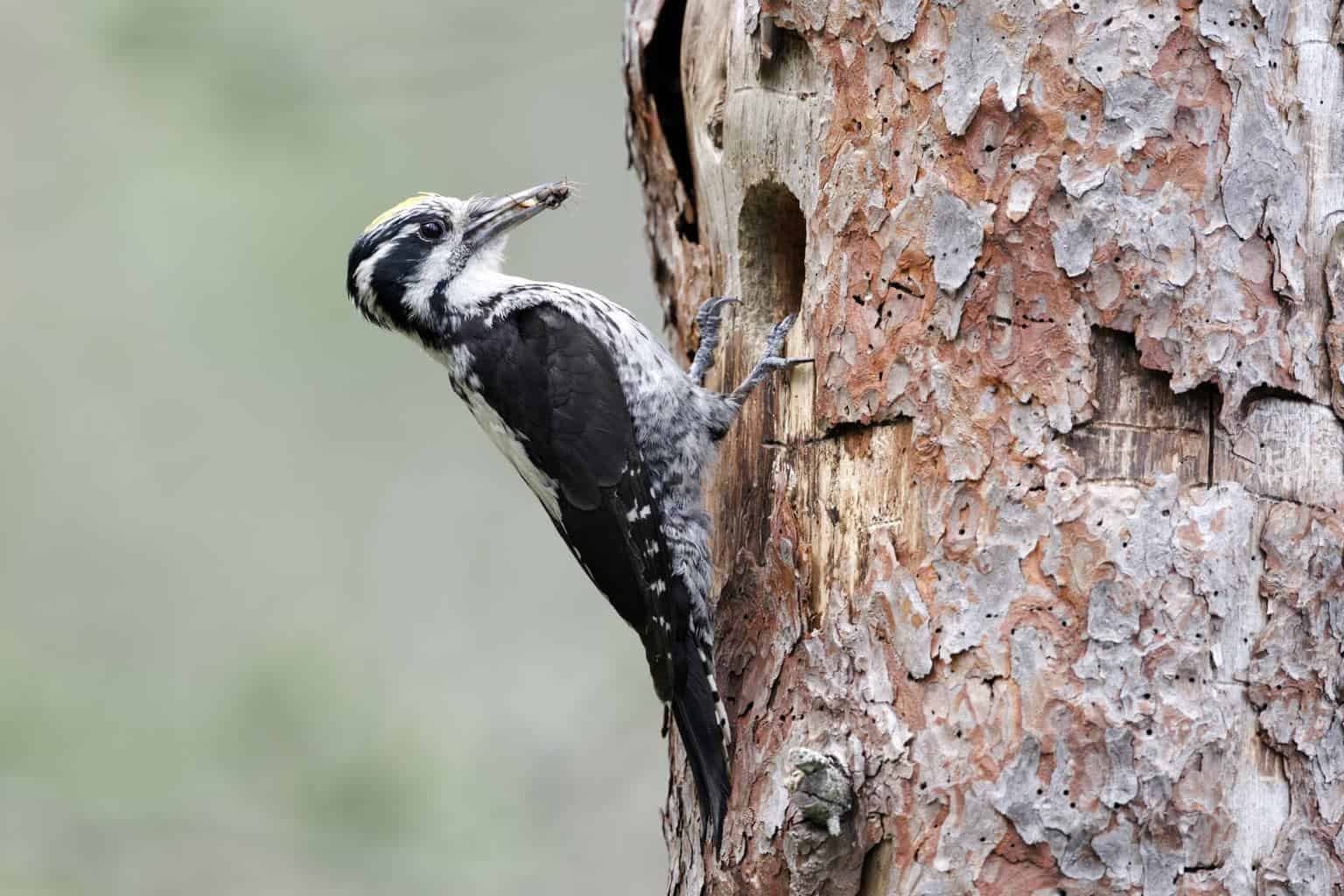
Unsurprisingly, the three-toed woodpecker clan turns up quite frequently in the search for the bird with the longest name.
Until 1995, this medium-sized woodpecker was thought to be the same species as the similar-looking Eurasian three-toed woodpecker, P. tridactylus (which must surely have one of the longest names of any bird in Europe!).
Now known to be distinct, these hardy woodpeckers are native mostly to Alaska and Canada, but they also inhabit some of the Northern United States as well as most of the rocky mountain range.
They breed in coniferous forests and often rely heavily upon the spruce beetle as a source of food.
This overlooked bird should surely be considered a dear friend to the forestry industry for its tireless work at decimating these softwood parasites!
Northern Beardless-Tyrannulet (Camptostoma imberbe)
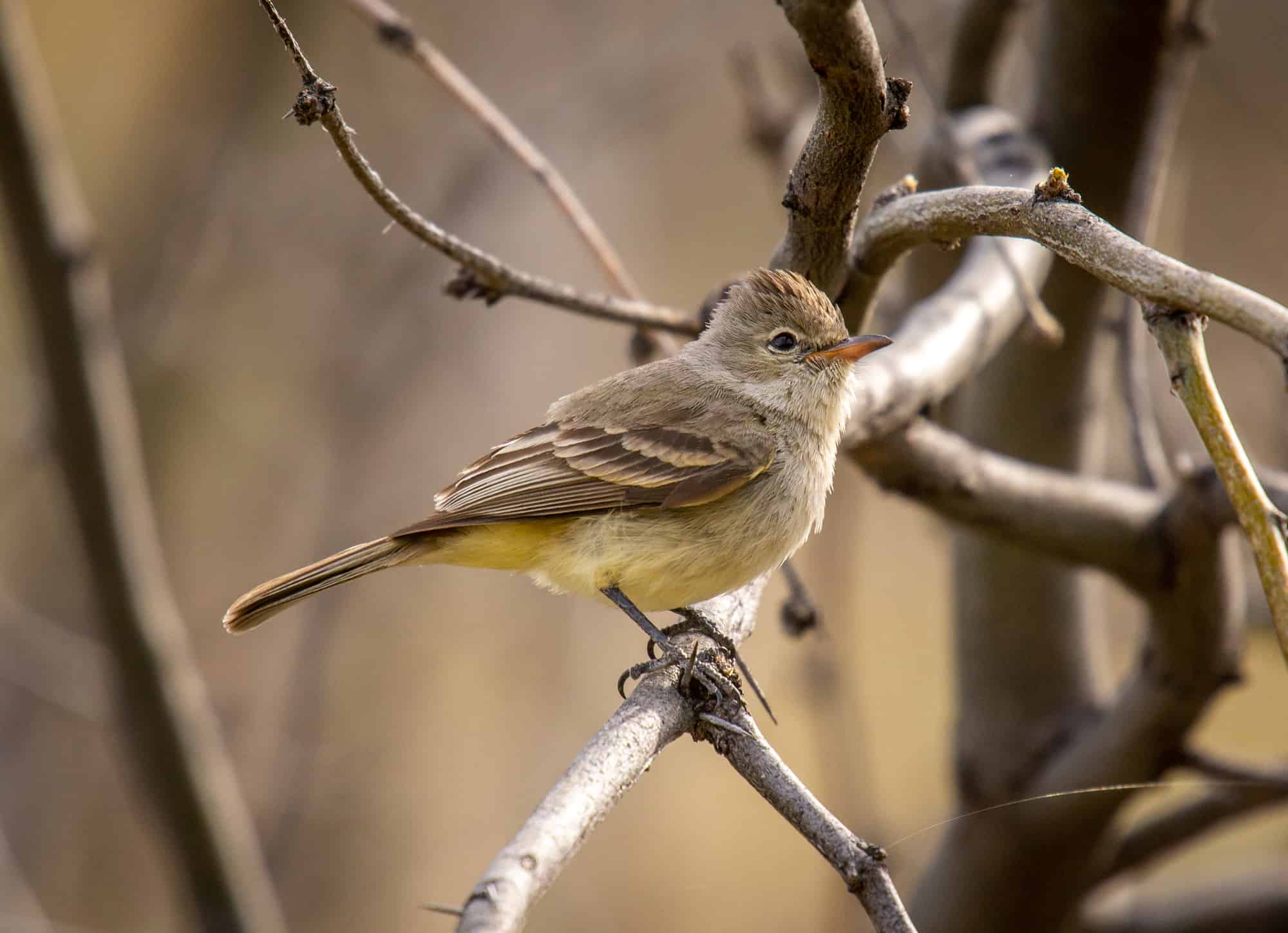
The joint winner for North American birds with the longest name goes to the Northern Beardless-Tyrranulet. But this candidate might be considered a runner-up by some since it’s the only resident in three of the southernmost United States, and only in summer for the most part.
It’s in the southern fringes of Arizona, New Mexico, and Texas that it’s possible to find this member of the flycatcher family, but the species is much more widespread in Central America.
Although a fairly plain-looking little brown bird, the impressive raised crest and domed nest are two of its most interesting features.
As an active type of bird, you can find them flitting around trees and shrubs hunting for insects, spiders, and sometimes berries, too.
Shortest Bird Name in the World
I came up with 4 birds that share the world title for having the shortest name, and all of them have just 3 letters. Two of them are quite famous, and all four are from Oceania. Can you think what types of birds they could be?
You might kick yourself if you didn’t get Emu (Dromaius novaehollandiae). As the second largest bird in the world, they are also one of the most famous.
Most people know that Emus are native to mainland Australia, but emu subspecies also used to inhabit Tasmania, Kangaroo Island, and King Island before they became extinct during the European settlement in 1788.
You can check out some of the Emu’s cousins, including the largest bird in the world (no prizes for guessing) in our list here.
In a similar corner of the globe lives the kea – a bizarre large type of parrot from New Zealand. Unlike its tropical relatives, the Kea nests in burrows in the ground!
A highly intelligent and omnivorous bird, keas feed on leaves, berries, nectar, insects, and even carrion! Keas were once persecuted by sheep farmers but thankfully received absolute protection under the Wildlife Act in New Zealand in 1986.
Our third of the three-letter species is the Mao (Gymnomyza samoensis), also known as the ma’oma’o. It is a large honeyeater, which can reach up to 12 inches long, and is locally famous for its loud and beautiful whistling call, especially during dawn and dusk.
These birds can only be found on the Samoan Islands in the South Pacific, and are endangered there, partly due to the introduction of exotic mammals to the islands like rats and cats.
Conservation initiatives are attempting to save this bird from extinction – you can find out more about their efforts in this short video.
The fourth and final bird with a 3 letter name is the Tūī, a highly aggressive bird from the New Zealand Archipelago, and another large honeyeater. Tūī’s are highly distinctive birds with a white throat tuft and blue, green, and bronze feathers.

